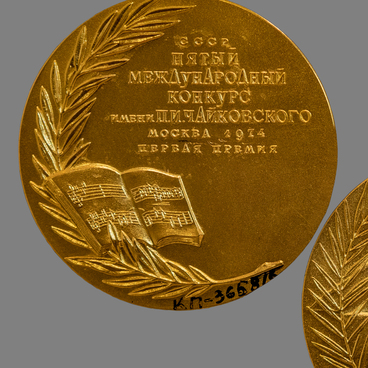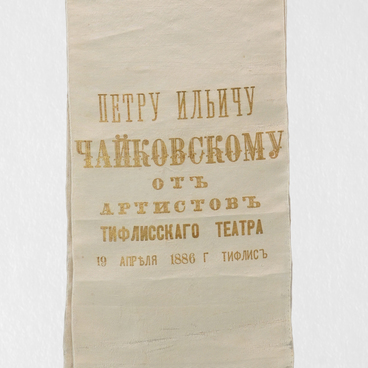The lithograph ‘Emperor Alexander I’ was created by artist and military officer Lev Kiel. The work was transferred to the Museum Estate in December 1968 from the Pavlovsk Palace.
The drawing depicts Russian Emperor Alexander I riding a black horse. The sovereign is dressed in a dark green uniform with yellow edging and dark green trousers with wide yellow stripes. The emperor is wearing gloves, and a black tricorn hat with a plume of pink and white feathers on his head. A sword is fastened to the side of the rider’s belt. In the background, one can see a castle in the valley among the trees.
Alexander I was the eldest son of Emperor Paul I of Russia and Maria Feodorovna. He succeeded to the throne after a palace coup on the night of March 11, 1801, when his father was assassinated. During his reign, he skillfully initiated a number of important liberal administrative and social reforms. For instance, in 1802, a decree was issued “On free farmers”, according to which serfs could be set free by the landowners for a sum of money.
Under Alexander I, Eastern Georgia, Finland, Bessarabia, Azerbaijan and the Duchy of Warsaw became part of the Russian state. After the 1812 Patriotic War and the expulsion of Napoleon from Russia, Alexander led the anti-French coalition of European powers. He was among the leaders of the Vienna Congress, one of the organizers of the Holy Alliance, and also approved a liberal constitution for Poland. The emperor died on December 1, 1825 in Taganrog, while traveling across the southern territories of Russia.
The creator of the lithograph Lev Kiel was a major general of the retinue of His Imperial Majesty, a participant in the Napoleonic wars of 1812–1814 and in the Polish campaign of 1830–1831. He was fond of art: he himself was an honorary free associate of the Imperial Academy of Arts. Kiel worked a lot as a watercolor artist, mainly painted scenes from the life of the Russian royal family and their entourage. Moreover, he created a series of etchings “Russian military uniforms” in 1815–1819 commissioned by Nicholas I. Lev Kiel was also a co-creator of the 1844 helmet model, which was developed by the emperor. It replaced the shako in the Russian army and served as a model for the famous Prussian Pikelhelm.
The drawing depicts Russian Emperor Alexander I riding a black horse. The sovereign is dressed in a dark green uniform with yellow edging and dark green trousers with wide yellow stripes. The emperor is wearing gloves, and a black tricorn hat with a plume of pink and white feathers on his head. A sword is fastened to the side of the rider’s belt. In the background, one can see a castle in the valley among the trees.
Alexander I was the eldest son of Emperor Paul I of Russia and Maria Feodorovna. He succeeded to the throne after a palace coup on the night of March 11, 1801, when his father was assassinated. During his reign, he skillfully initiated a number of important liberal administrative and social reforms. For instance, in 1802, a decree was issued “On free farmers”, according to which serfs could be set free by the landowners for a sum of money.
Under Alexander I, Eastern Georgia, Finland, Bessarabia, Azerbaijan and the Duchy of Warsaw became part of the Russian state. After the 1812 Patriotic War and the expulsion of Napoleon from Russia, Alexander led the anti-French coalition of European powers. He was among the leaders of the Vienna Congress, one of the organizers of the Holy Alliance, and also approved a liberal constitution for Poland. The emperor died on December 1, 1825 in Taganrog, while traveling across the southern territories of Russia.
The creator of the lithograph Lev Kiel was a major general of the retinue of His Imperial Majesty, a participant in the Napoleonic wars of 1812–1814 and in the Polish campaign of 1830–1831. He was fond of art: he himself was an honorary free associate of the Imperial Academy of Arts. Kiel worked a lot as a watercolor artist, mainly painted scenes from the life of the Russian royal family and their entourage. Moreover, he created a series of etchings “Russian military uniforms” in 1815–1819 commissioned by Nicholas I. Lev Kiel was also a co-creator of the 1844 helmet model, which was developed by the emperor. It replaced the shako in the Russian army and served as a model for the famous Prussian Pikelhelm.



